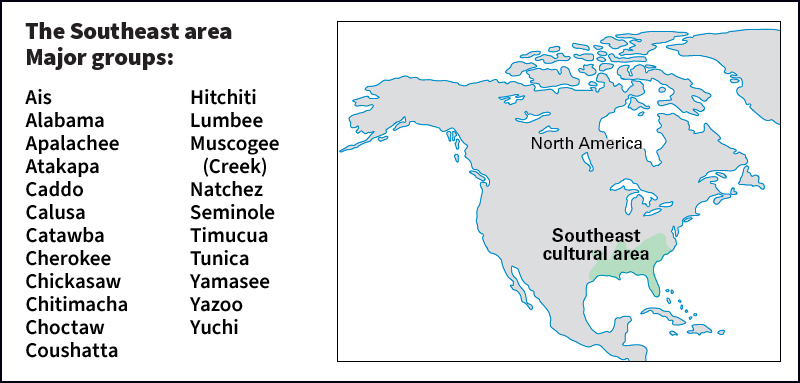Caddo << KAD oh >> formed a group of allied tribes that once lived in Louisiana, Arkansas, and Texas. Caddo is an abbreviation of the native name Kadohadacho, meaning real chiefs.

The Caddo lived in large houses of post framework covered with grass. Each house held several families. The Caddo cultivated fields of corn, beans, and pumpkins, and collected wild grapes and berries. They also hunted deer, bear, wild fowl, and buffalo. The men cut and traded the wood of the Osage orange, the favorite bowwood among tribes of the Western plains. The women made excellent pottery. Caddo chiefs were highly respected, and rode from place to place on litters or on the shoulders of their subjects.
Early Spanish explorers learned to respect the Caddo warriors, who bravely hurled fire-hardened lances at the invading soldiers. But explorers who came from Mexico in the middle 1600’s knew these people as Texas or Tejas, meaning friends. When French explorers met the Caddo in the 1680’s, they found them riding swift Spanish horses. During the 1700’s, warfare between the Spanish and French in Caddo territory killed many of the Caddo, and most of the remainder moved to Texas.
In 1855, the United States government assigned the Caddo people a reservation on the Brazos River in Texas. The Caddo were moved in 1859 to southwestern Oklahoma. Today, about 2,500 Caddo live in the United States. About half live in Oklahoma.
See also Texas (Early days).
